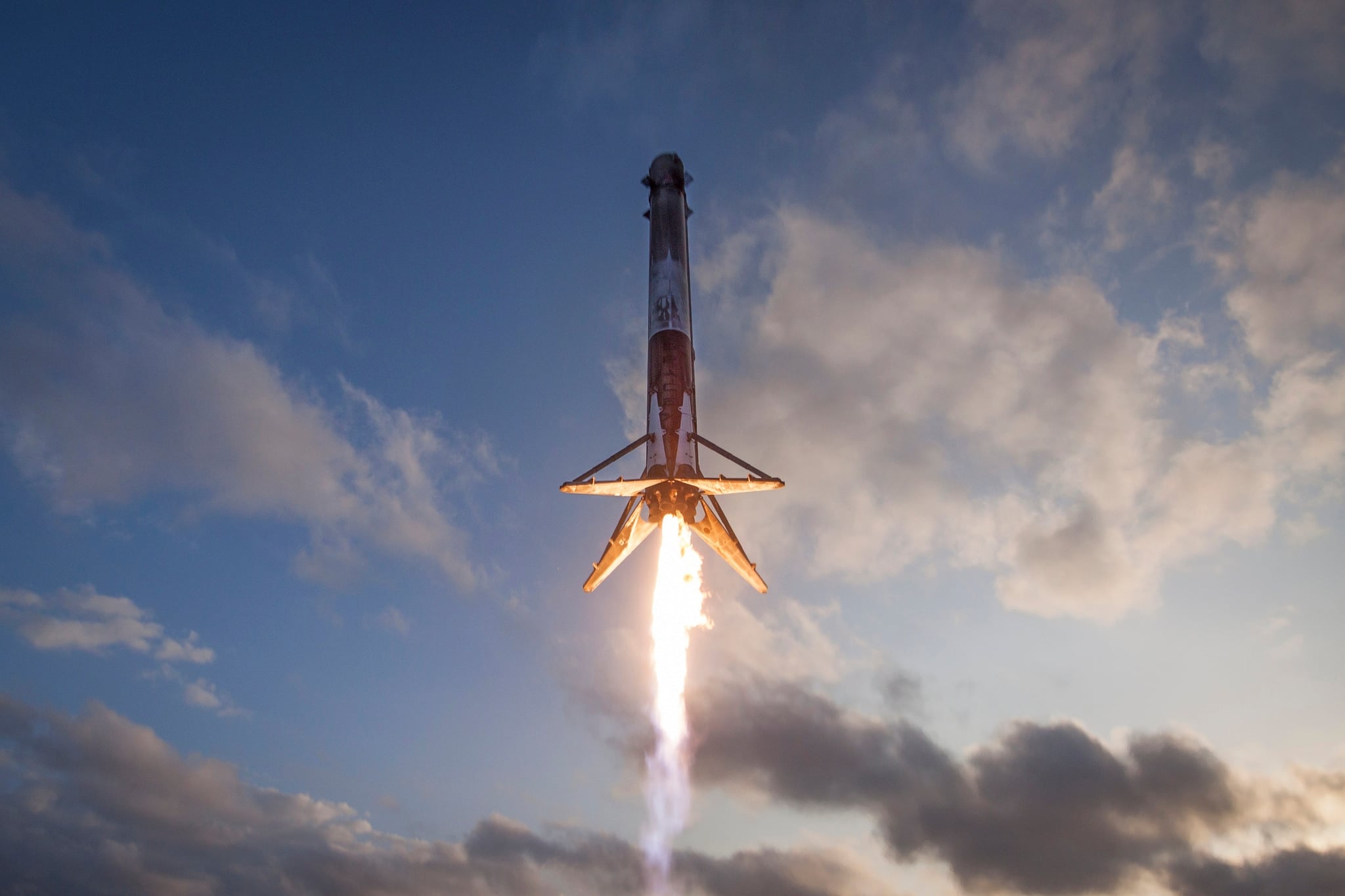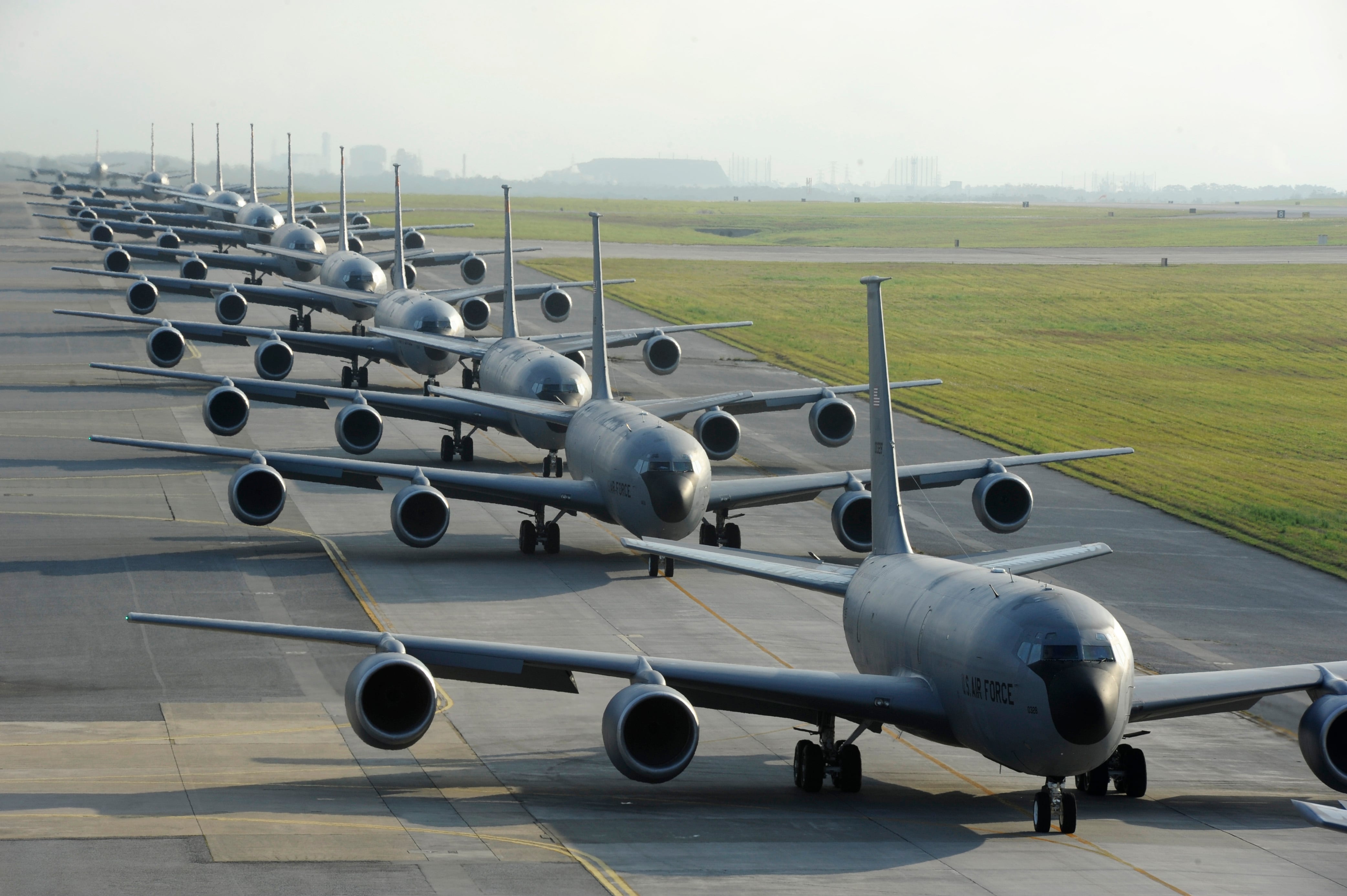WASHINGTON — In the near future, sending military cargo in and out of space may not only be the realm of science fiction and fantasy pop culture like Star Trek and Star Wars.
In fact, Air Force Gen. Carlton Everhart, who heads Air Mobility Command, believes it could happen within the next five to 10 years, he told reporters on August 2.
Everhart visited the headquarters of SpaceX and Virgin Orbit last week — he hopes to get to the Jeff Bezos’-owned Blue Origin sometime soon — to talk about how emerging space technologies could be used by the Air Force’s air mobility fleet, which transports people, cargo and fuel all over the world.
SpaceX executives “tell me that they can go around the globe in 30 minutes with a BFR,” Everhart said, referencing the next-generation, reusable rocket under development by the company.
“Think about this. Thirty minutes, 150 metric tons, [and] less than the cost of a C-5,” he continued. In comparison, it would take the service’s cargo aircraft take anywhere from eight to 10 hours to get to the other side of the world.
RELATED

That makes space transportation an attractive proposition, if AMC can figure out the logistics of how to send, receive and protect cargo coming and going from space. Another potential opportunity is using space as an environment to preposition cargo, which then could be loaded autonomously onto a resupply vehicle to descend back to earth in a time of need, he said
Everhart floated to the idea to Gwynne Shotwell, SpaceX’s president and chief operating officer, who said that could be possible when BFR starts flying in the early 2020s.
“I said, I need to get me some of that. How do I do that?” he said. “So we’re looking at partnering with them. We’re looking at partnering with anyone in industry. […] I want to get to any part of the industry, whether that’s vertical lift, or horizontal to vertical and then back down, so I can get around the globe the quickest [and] to be able to, like you say, affect that adversary.”
Everhart has a reputation in the Air Force community for talking about big — and some critics would say ill-advised — technological leaps such as autonomous or stealthy aerial refueling tankers.
RELATED

The AMC commander seemed to acknowledge that criticism on Thursday, explaining that the reason he shares his “off-the-cuff” thoughts was because “young airmen, they’ll glom onto it […] and the next thing you know, there’s a concept,” he said.
“If we don’t do this and if we stay just in the air domain, Air Mobility Command is going to become irrelevant,” he said, adding that he had spoken to Air Force Space Command head Gen. Jay Raymond about potential partnership opportunities between AMC and AFSPC.
Although discussions are still in their nascent stages, Everhart believes the service could begin testing “the concepts” of using space transport to deliver cargo within five years, with a fully operational construct possible within 10 years, he said. However, he noted that it would probably take until the fiscal year 2022 budget to begin funding such efforts.
“The concept of how this works? I want industry to do it,” he said. “They will come up with innovative ways and they won’t be encumbered with a long acquisition process. They’ll do it in the speed of war that I need. The question is, how do I incentivize them? I incentivize them by [contracts for] carrying the DoD cargo [during peacetime].”
So, what kinds of things could the Air Force preposition in space, and where would it go?
“I’m willing to stick anything up there,” he said, although hardware and materiel that could survive in space are the most obvious options.
Where it goes still needs to be explored, but Everhart said he doesn’t have a strong preference for whether materiel is stored in low earth orbit, geosynchronous orbit or another option.
“Low earth orbit? Fine,” he said. “But if commercial industry is going to launch 5,000 satellites, I don’t think low earth orbit is the place to be. It’s cluttered out there.”
And the logistics of how the Air Force would guard its cargo in space, or how its terrestrial bases would accept it? Well, Everhart said that hasn’t been figured out yet.
“The technology is there, now we need to experiment with it,” he said. “What kinds of fuel does it need? What parts do you have to have? Does it go offshore? Does it go onshore? What kind of a footprint does it take? All the logistical things that go with it from the logistical side, that’s what I’m working [on] with industry.”
Valerie Insinna is Defense News' air warfare reporter. She previously worked the Navy/congressional beats for Defense Daily, which followed almost three years as a staff writer for National Defense Magazine. Prior to that, she worked as an editorial assistant for the Tokyo Shimbun’s Washington bureau.








